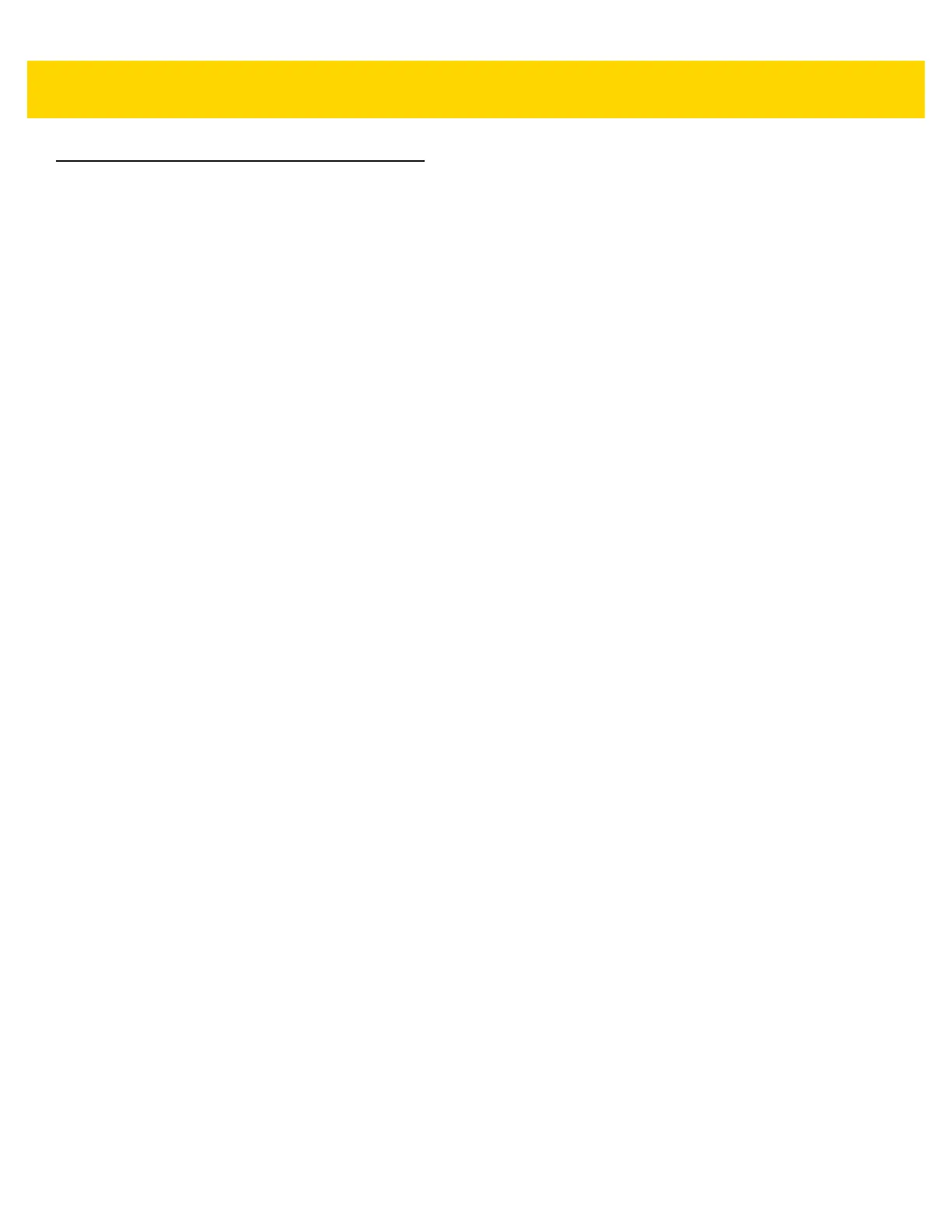123Scan and Software Tools 16 - 5
Multicode Data Formatting (MDF)
Multicode Data Formatting (MDF) enables a 2D imaging scanner to scan all bar codes on a label with a single
trigger pull, and then modify and transmit the data to meet host application requirements. MDF supports
programming up to nine unique labels into one scanner. MDF also supports scanning multiple bar codes on
opposite sides of a box by holding the trigger.
Programming options include:
•
Output all or specific bar codes
•
Control the bar code output sequence
•
Apply unique multicode data formatting (MDF) to each output bar code
•
Discard scanned data if all required bar codes are not present
For more information, refer to the Multicode Data Formatting and Preferred Symbol, p/n MN-002895-xx.
Programming Options
Using 123Scan, programming an MDF Group is similar to setting an ADF rule. MDF programming is saved in the
123Scan configuration file.
MDF can be deployed to a fleet of 2D imaging scanners using the Scanner Management Service (SMS) through a
traditional SMS package.
MDF Terms and Definitions
•
Multicode - Industry term for the ability to scan multiple bar codes with one trigger pull.
•
Multicode Data Formatting (MDF) - Zebra's name for Multicode.
•
MDF Session - The act of decoding a label from trigger pull to either data transmission or decode session
termination.
•
MDF Group - The complete set of commands for processing a single label which contains multiple bar
codes. 123Scan can program from one to nine MDF Groups.
•
MDF Rule - The programming steps for processing a single bar code. Similar to an ADF Rule, the MDF Rule
contains both criteria and actions. One MDF Rule identifies a single bar code and how to format its data;
more bar codes require more MDF Rules.
•
Pattern Match - The criteria used to determine if a set of scanned bar codes qualify for Multicode Data
Formatting. If the pattern match criteria are not met, Multicode Data Formatting is not applied.

